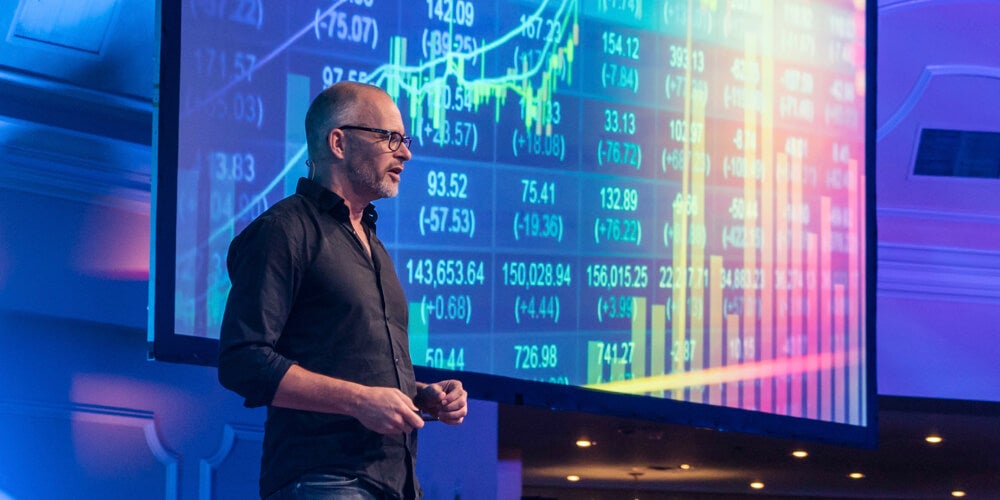A “top secret” meeting of scientists was held at the Langone Medical Center on Halloween 2015. Their aim? To kickstart a new Human Genome Project and build a functional human genome from the base pairs up by 2026.
“There’s only one grand challenge in synthetic biology. Only one. And it’s to write a human genome. And we have to do that,” said Autodesk Fellow Andrew Hessel at Singularity University’s Exponential Medicine 2016 conference.
Like the first Human Genome Project before it — which resulted in the first fully sequenced human genome — writing a human genome from scratch is an audacious goal. Hessel said a number of organizations are already writing DNA, and we can fabricate million-pair DNA constructs. But the human genome contains three billion base pairs.
We’re a long way from writing DNA on that scale.
“It took a year to design the yeast genome, even though there were barely any changes made to [it]. So, we need better design tools,” Hessel said.
Work on the yeast genome is the most advanced thing going on in synthetic biology. It’s been pushing the field forward, but not as fast as Hessel would like. His career was hugely influenced by the race to map the first human genome in the 90s and early 2000s, and he thought to himself — now we need something like that for synthetic biology.
That’s why Hessel and fellow scientists are pushing for a new Human Genome Project focused on synthetic biology — something to spark people’s imagination. That “top secret” meeting and a subsequent white paper made just the splash they were looking for.
“Two hundred news organizations picked up the story, and we got ninety two million page impressions in the first week,” Hessel said. “Everybody suddenly knew about the secret meeting to synthesize the human genome.”

Though interest in the project is high, it’s just the beginning.
“This is really hard work…trying to go from DNA to packaged chromosome put into a cell and functional is hard. I don’t want to gloss over the technical challenges,” Hessel said.
Hessel’s work at Autodesk is focused on making more effective design tools. He started writing viruses two years back, and it took weeks to get the DNA. Now, he’s writing more complicated viruses to fight cancer. The larger the amount of DNA, the longer it takes to assemble.
But there are a number of fields, from health and medicine to electronics (DNA is an excellent medium for long-term information storage), creating big incentives to speed development. Hessel is excited at the prospects.
Though it’s still early, he thinks 2026 for a fully engineered human genome is realistic if synthetic biology follows an exponential pace like genome sequencing did.
“So, a new genome race is starting, ladies and gentlemen,” Hessel said. “It’s starting now. It’s still in the organizational phase, but it is going to accelerate and, guaranteed, by 2026, we’re going to succeed.”
As for the more controversial aspects of the project, like the worry the work may result in synthetic humans? The intentions behind this project are not to produce synthetic babies.
“We couldn’t advocate that,” Hessel said.
It’s more about pushing the science and technology necessary to build a whole human genome — but no more. And he has a personal motivation too.
“I’m doing this because I want my daughter to literally have the best nanomedicine in the future, the best diagnostics, the best treatments,”Hessel said. “I hope you realize that by 2026, it’s a completely different game.”
Want to keep up with coverage from Exponential Medicine? Get the latest insights here.
Image credit: Shutterstock



